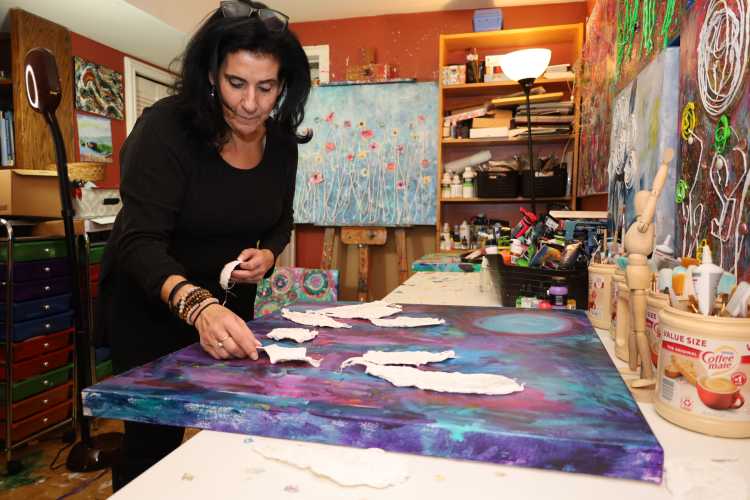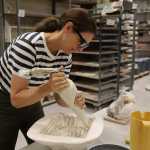When accomplished Broadway actor and dancer Robert Hartwell purchased a centuries-old house in the Berkshires during the height of the COVID-19 pandemic, it not only fulfilled the dream of homeownership but reawakened other dreams.
Fast forward to four years later, when Breaking New Ground, a six-episode Max Original docuseries premiered this week. The show follows Hartwell as he takes on the challenge of transforming the 200-year-old house with a complicated history into a house filled with bold colors and lots of love.
This is no ordinary renovation story, but one that tackles America’s ugly racial past (and sometimes present) while also creating something extraordinary and reflective of Hartwell’s essence — a light and energy that has shined on Broadway in shows like Memphis: The Musical, Cinderella and Hello, Dolly! He shined just as bright when he was a child in the 1990s putting on shows for friends while spending summers in East Hampton with his father, the well-known local basketball coach, William Hartwell.
“I’m excited for [the viewers] to see that the love that that place pours into young people — You see it reflected decades later,” Hartwell tells Behind The Hedges.
The strength and sense of self that viewers will see alongside a design extravaganza is perhaps what led to the show in the first place: A social media post that went viral.
After a whirlwind closing on his Massachusetts home, just after Juneteenth, Hartwell took to Instagram with a post to tell a story. When he called the seller to purchase the house, he was told it was a cash-only offer. The reply was: “I’m sure that takes you off the table.”
“Don’t you ever underestimate a hardworking Black man,” Hartwell wrote. He paid $379,000 cash and has taken out a $1.5 million construction loan to make the home better than ever. He went on to tell the story of the home, built in 1820, when slavery was still legal. When the agent asked why he wanted such a big house, he said it was “a generational move.”
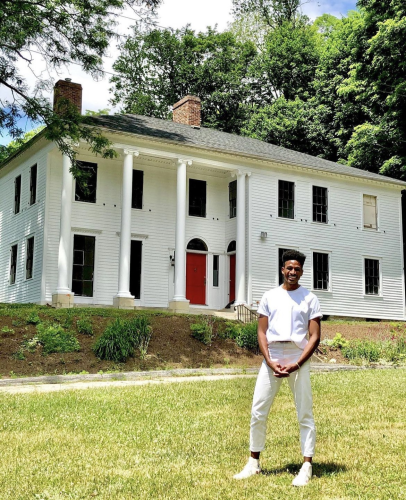
“I wish I could’ve told my ancestors when they were breaking their backs in 1820 to build the house that 200 years later a free gay Black man was going to own it and fill it with love and find a way to say their name even when 200 years later they still thought I would be ‘off the table.’”
The post has been liked more than half a million times on Instagram.
He didn’t even realize the post had gone viral as he had turned off his phone to savior the day. When he turned it back on, his mother broke the news before he saw it with his own eyes. “I didn’t even believe her. I was like, ‘What are you even talking about?’ And then I realized, ‘Oh my God, this thing went viral.’’
“Then, I called my best friend, and she asked me, ‘Hey, what is something that you’ve always wanted to do?’ And she reminded me of when I was on Broadway, and I would do Broadway dressing room renovations,” he recalls of a web series called, Broadway Quick Change.
His best friend told him, “‘You love interiors. You love history like your dad. You love stories — turn this into a show.’”

They stayed up all night and created a pitch, and even made a website. The next day the Scott Brother— Drew and Jonathan Scott of Property Brothers fame — reached out to have a meeting. Breaking New Ground is produced by Scott Brothers Entertainment and OWN: Oprah Winfrey Network, as well as executive produced and hosted by Hartwell alongside executive producers Drew Scott, Jonathan Scott, Jane Van Deuren, Damani Baker and Josie Crimi.
“The idea came really because my best friend encouraged me to remember my dream, period,” he says.
Filling the House with Color and Joy
“I don’t want to ever live in history,” Hartwell says. “I want to be history. I want to move history forward.”
Coming into this project, he says he wanted to keep many of the shapes that were in the home and restore as much of the architecture. “The bones of the home, but drenching it in color and drenching it Black joy were just things that were non-negotiables for me,” he says.
He explains: “This was before I had an architect before I had a designer, like just from within me, I knew that this thing had to be bold and vivid and just delicious.”
He found a “perfect match” in Courtney McLeod of Right Meets Left Interior Design, a New York City-based firm, “because she really understands color, she understands Black joy, she understands luxury, and she was able to make this house truly beautiful.”
“The idea isn’t to take it back to 1820,” says McLeod in the first episode that premiered this week. “The idea is to respect the history and to turn it into something colorful and filled with joy.” His family heavily influenced his decision to purchase the house and was also a strong source of support throughout the process. But, “It was truly my family that brought me to this house.”
His aunt Paulette, who lived on the East End, passed away from the coronavirus in early June of 2020. “We all know, from looking at the statistics, Black and brown bodies, especially Black and brown female bodies, were just really absolutely disregarded in this pandemic,” he says.
“That day, I literally went into my room, I closed the curtains, and I just like shut everything off. The next morning, my stepmom Eileen called me and she said, ‘Rob, I need you to get up. I need you to open your curtains. I need you to go outside. I need you to get a magazine. I just need you to come alive again, ‘cause that’s what Aunt Paulette would have you to do.’”
The magazine he opened that Saturday was House Beautiful and he flipped to the page and saw Great Barrington. He had never been to the Berkshires before and he wasn’t even sure where that was exactly. He logged onto Zillow and typed in “Great Barrington,” and only had to scroll down to the third listing when he saw a house he always wanted.
On Monday, he made the two-hour drive from his apartment in New York City to see the house. “I put an offer in on Wednesday, and then that Friday was Juneteenth, and I paid for it, and then the next week I came to pick up the keys,” he says It was that quick.

While death led him to find this house, “I believe that pain can produce our greatest purpose because that was one of the most painful things I’ve experienced in my life, and it also opened me to a greater purpose.”
His family has been a source of inspiration for him and will be seen throughout the documentary series.
Rooms are dedicated to specific members of his family. The front parlor, revealed in the first episode, is Aunt Paulette’s Parlor. This “jewel box,” as Hartwell calls it, is behind a set of pocket doors and is filled with natural light from floor-to-ceiling windows with original glass panes that were carefully resorted. The hardwood floor turned out to date only to the 1940s, but it had to be ripped up anyway to repair a water leak below, but Hartwell chose a “honey” colored hardwood replacement that looks like it’s always been there. Purple toile wallpaper makes a splash, as does the furniture, situated around the resorted fireplace and his grand piano.
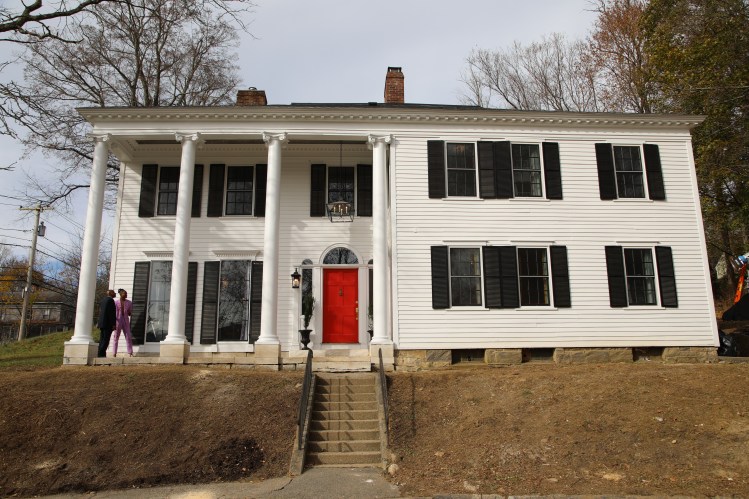
“I don’t think you can build a home without building with the people who built you,” Hartwell says. “Right now I’m sitting in my study, and I would not have the love of history, and of books, and of education if it weren’t for my dad, Coach Hartwell — he instilled that work ethic in me. He instilled it in me, that intellectual curiosity in me, he instilled that historical integrity in me. You can’t build a study without honoring William Hartwell in this space. So, this room, this study, is dedicated to him.”
His favorite part of the process was the overall design aspect. “The designer and I really just had quite a marriage of love for this home and a deep desire to get it right,” he says. They also shared a “longing to bring as many Black and brown artisans and luxury artisans with us to help tell this home’s new story.”
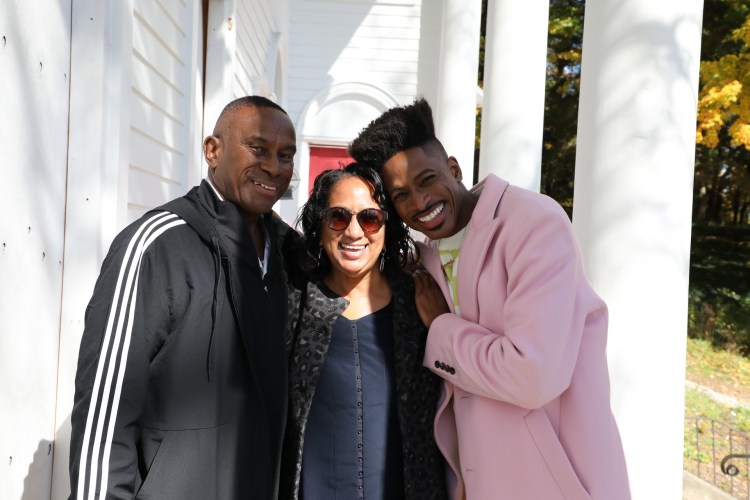
Some of his favorite times during the process were on Friday nights when he would go over to her Flat Iron studio and “we would just obsess about fabric choices for hours.”
It became more than a labor of love. “It became this other world that we were creating together and pulling all of these rooms together,” he says. “All of the little details — there’s details on details on details in this home and being able to have the time with her to do that was my favorite part of this process.”
While viewers await the slow reveal of his home over the six-week episode premiere, we asked Hartwell which one is his favorite. He hesitates because it’s easy to see why that’s a difficult question.
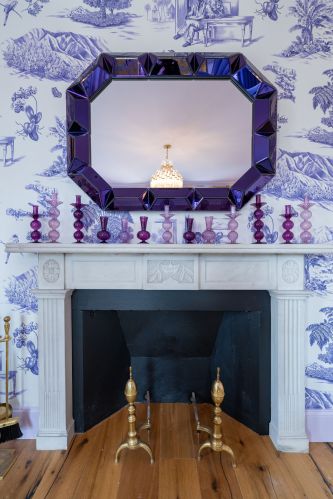
“So my favorite room in the home is actually my study which is dedicated to my dad and I think one, because it’s dedicated to him but two, the feeling in this space is it just enwraps you with possibility and beauty — and this is where I make my work. This is where I create, this is where I coach clients, this is where I talk to students and to be able to be in a space where you are held is in many ways, is such a gift. And so this room really takes me to another place.”
There are elements of the Hamptons, though. The design of the kitchen “is about as quintessential East Hampton as you can get,” Hartwell says.
“I told a story to my designer who asked me, ‘What were some of your earliest design influences?’ and I told her I remember when I was at Stages, which is the musical theater camp that I would go to every summer in East Hampton, and both Gene and Helene Stilwell [Gene Stilwell is the executive sales manager at Town & Country Real Estate’s East Hampton office] are still dear mentors of mine and they are also in the TV show, and I had a play date with one of the campers and it was the first mansion I had ever been in before and I remember walking in and my friend saying, ‘Oh you can grab something out of the fridge,’ and I was in this kitchen and I couldn’t see the fridge!”!
“It was a paneled fridge and I had never seen that before and I was like, ‘Oh my God, it looks like a closet and it was a fridge.’ I’ve Always kept that moment in — I was probably 10 years old — we are 25 years later, I’m still remembering that moment of, ‘Wow, that is wealth. That is success.’ And I had always said, ‘I will have known, I have made it when I have a big white panel-ready fridge.’”
Coming from humble beginnings, he said being around wealth “showed me what was possible when you dreamed big and when you worked hard — and when you did it with heart. “I think people look at the Hamptons and they think of great wealth and they think of people summering in the Hamptons and, yes, it is those things,” he says, but it is “also it is a town of local people who have great heart and who have great passion for where they come from and I think that’s why I always feel lifted when I go there because I know that.”
Behind The Hedges had to ask, how come Hartwell chose the Berkshires over the Hamptons?
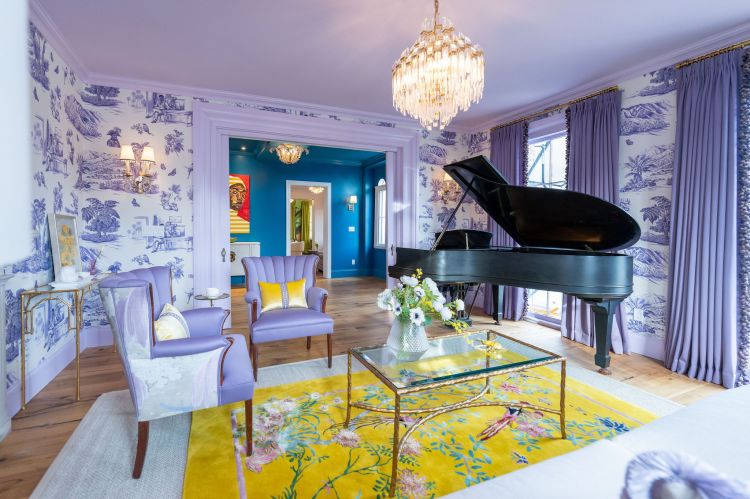
“I have to say the Berkshires chose me,” he says. “It was truly, the most God-wink thing ever in my life that I stumbled across that House Beautiful magazine that said Great Bearington, Massachusetts, that then I felt a ping to open Zillow and from Zillow to say ‘yes’ to getting in the car and coming up.”
“The rest is history and it continues to unfold.”
This article appeared in the July Fourth issue of Behind The Hedges inside Dan’s Papers. Read the full digital edition here.




